 |
 |
 |
| |
Mechanism by which the HIV Integrase Active Site Mutation N155H Confers Resistance to Raltegravir
|
| |
| |
Reported by Jules Levin
XVII HIV Drug Resistance Workshop
June 10-14, 2008
Sitges, Spain
J. A. Grobler, K. A. Stillmock, M. D. Miller, and D. J. Hazuda, Merck
Raltegravir has been the first and is currently the only integrase strand transfer inhibitor (InSTI) approved for the treatment of HIV. Raltegravir inhibits integrase by binding to and sequestering essential active site magnesium ions. The binding of the inhibitor to integrase is helped both by interactions with the metals and through direct contact with the enzyme. The active site mutation, N155H, either alone or with additional mutations, is associated with resistance to raltegravir both in cell culture studies and in the clinic and has been observed to cause cross-resistance to other InSTIs including elvitegravir. The mechanism by which this mutation causes resistance has not yet been figured out. N155 interacts with integrase active site residues that bind the magnesium ions, and mutation of this residue may lead to resistance by perturbing metal binding to the active site.
A radioligand binding assay was used to measure the magnesium dependent binding of raltegravir to functional complexes of wild-type integrase (In-wt) and mutant integrase (IN-N155H) assembled with viral DNA ends.
Raltegravir binding affinities to In-wt and In-N155H were dependent on magnesium ion concentration. The two enzymes displayed similar binding affinities for magnesium and for raltegravir in the absence of metal. However, the binding affinity of raltegravir to integrase at saturating magnesium concentrations was lower with InN155H than with wild-type enzyme.
The integrase active site mutation N155H causes resistance to raltegravir primarily by perturbing the arrangement of the active site magnesium ions and not by affecting the affinity of the metals or by affecting direct contacts of the inhibitor with the enzyme. These studies lay the goundwork for determining the roles of additional mutations in the N155H resistance pathway and for establishing the mechanisms by which other pathways confer resistance to InSTIs.
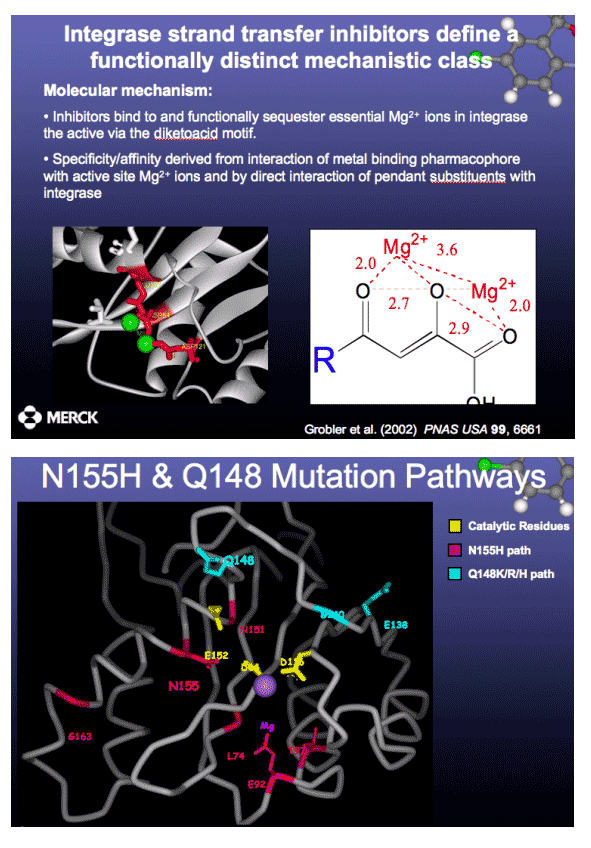
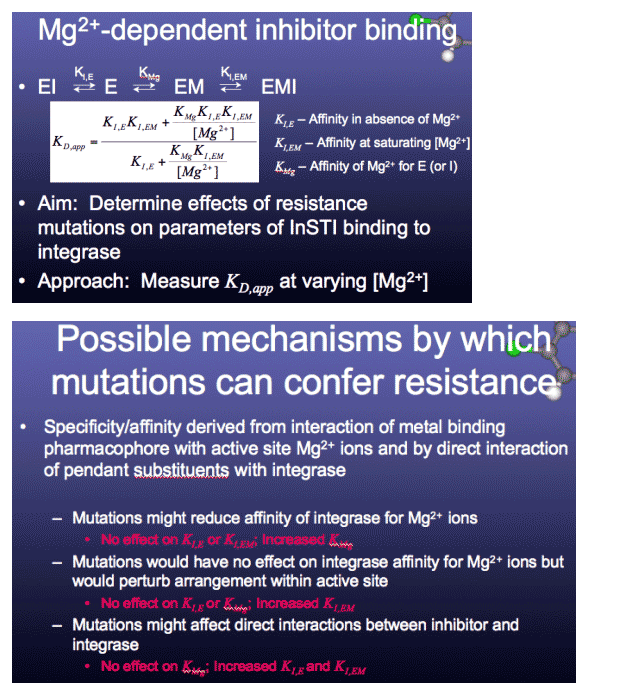
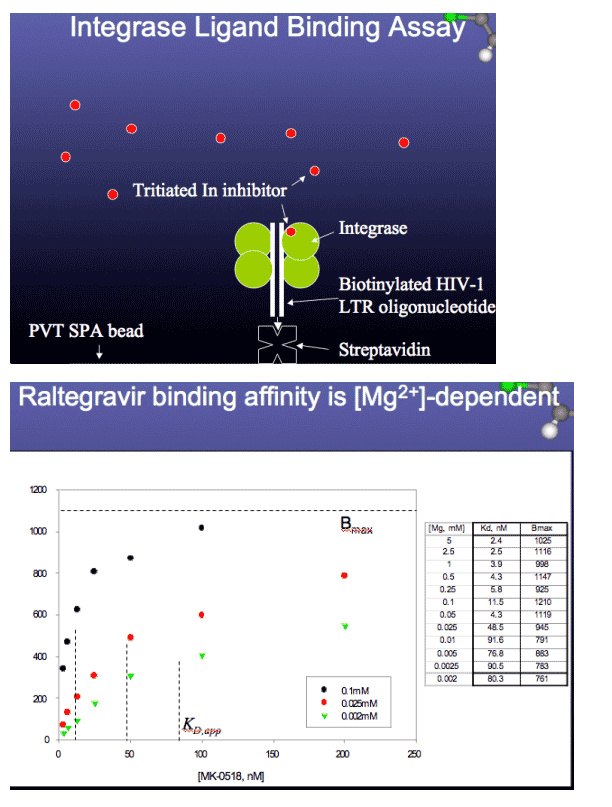
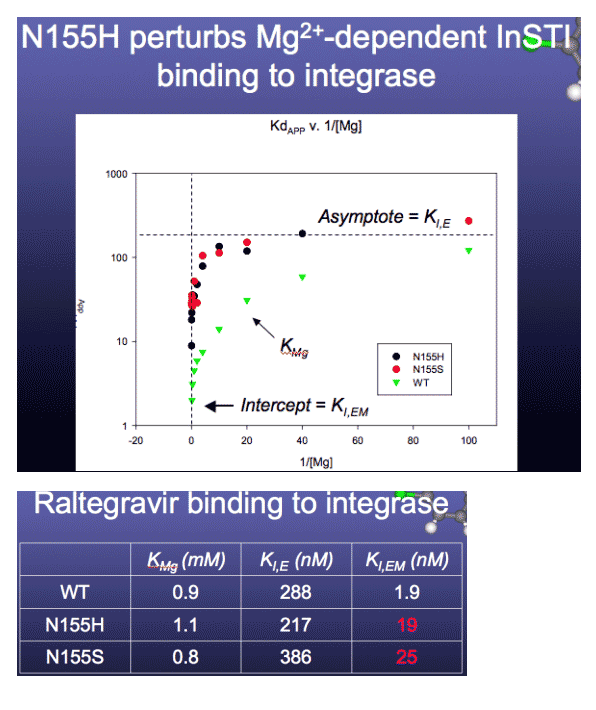
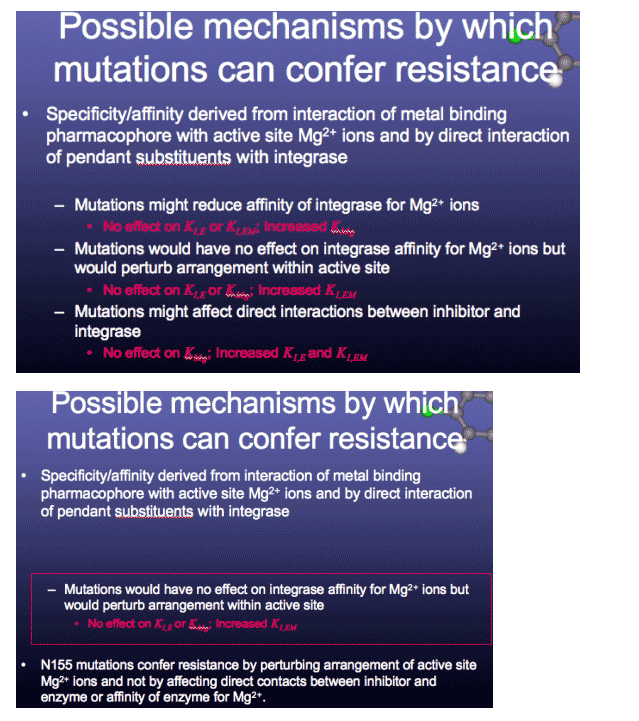
|
| |
|
 |
 |
|
|